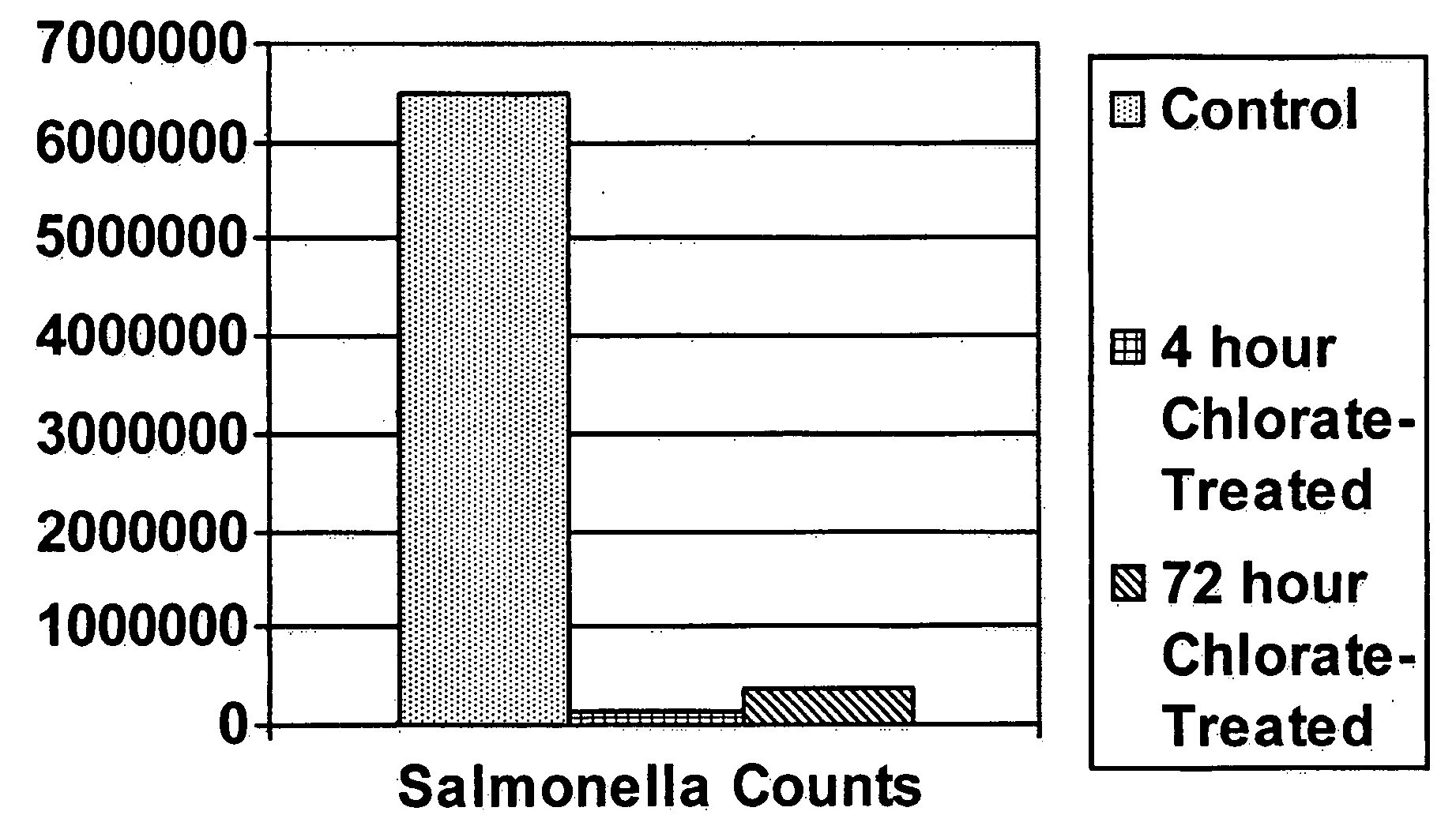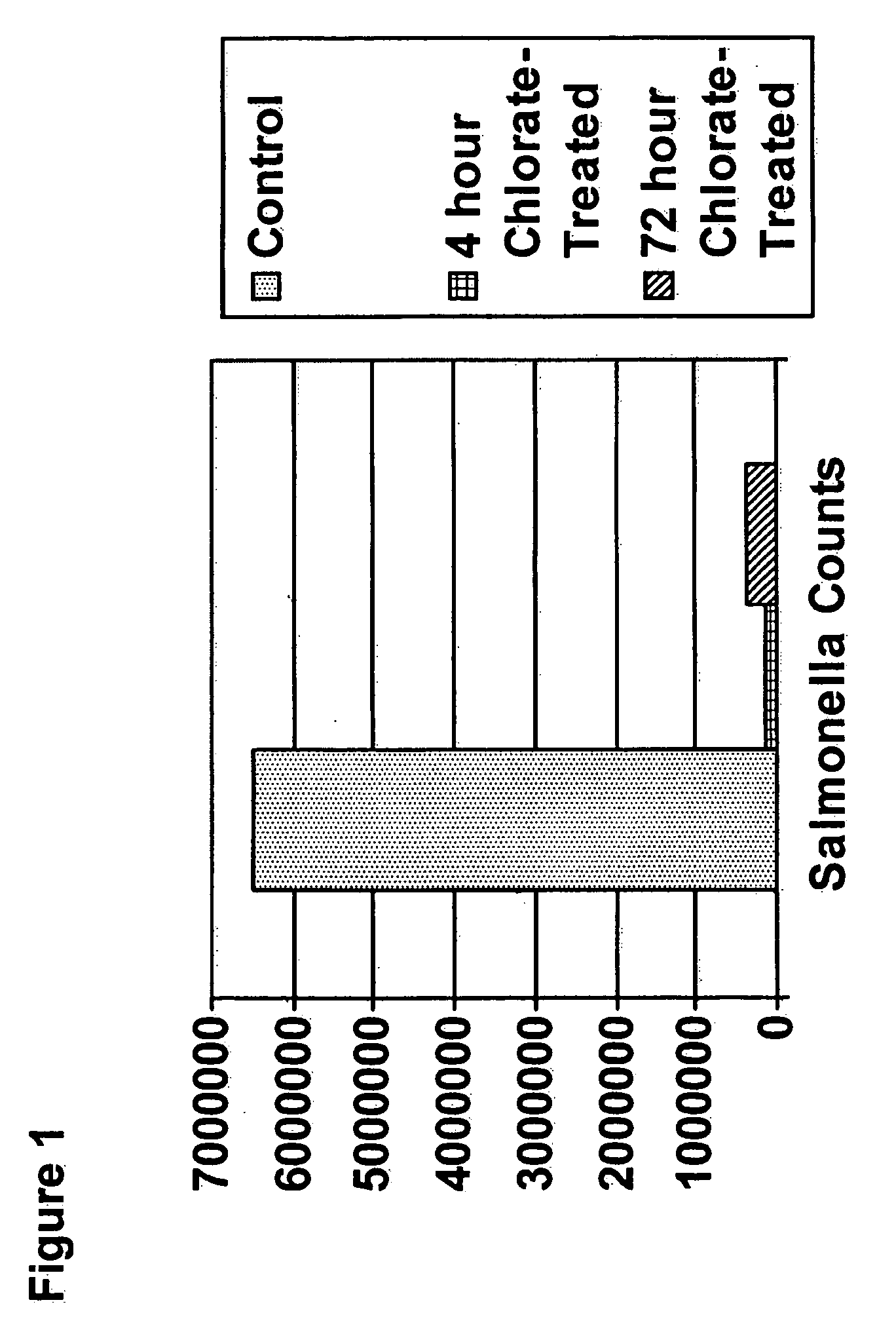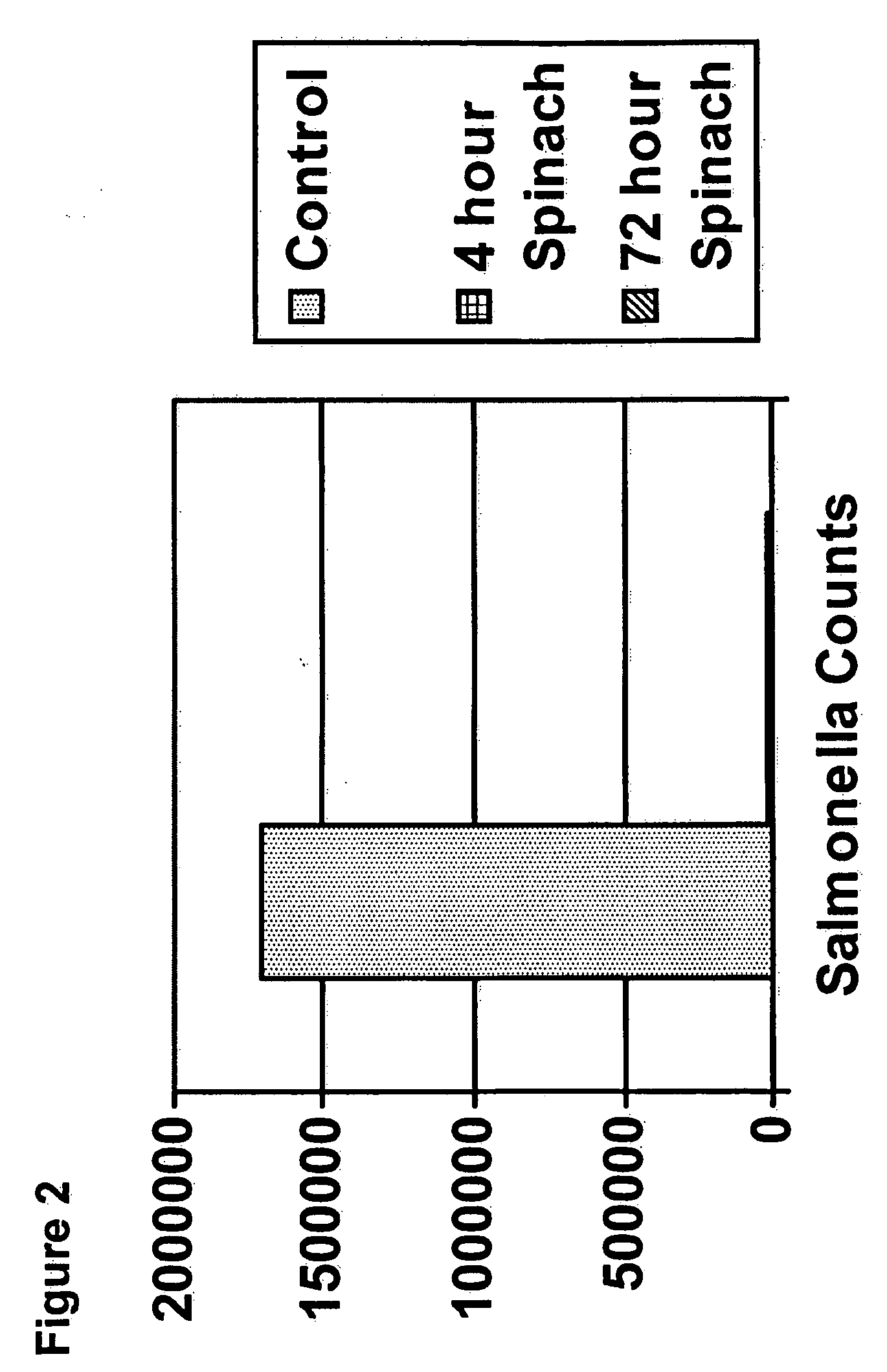Formulations and use of chlorate to reduce pathogens in food and livestock
a technology of chlorate and food and livestock, applied in the direction of biocide, disinfectants, milk preservation, etc., can solve the problems of contaminated fruits and vegetables, bacterial food-borne pathogen contamination of animal food products, etc., to reduce and inhibit the growth of
- Summary
- Abstract
- Description
- Claims
- Application Information
AI Technical Summary
Problems solved by technology
Method used
Image
Examples
example 1
[0024]Eight chicken backs were inoculated with Salmonella (TNTC inoculum). After 20 minutes, four were sprayed with a 10% solution (w / w) of sodium chlorate and water and the other four were sprayed with an equal amount of distilled water. Swabs of approximately 100 cm2 were taken after 4 hours on four backs treated with sodium chlorate solution and swabs of approximately 100 cm2 were taken after 72 hours on both the sodium chlorate solution and distilled water-treated backs and enumerated for Salmonella counts.
[0025]Treatment with sodium chlorate solution significantly reduced (PSalmonella on chicken backs at both 4 and 72 hours post-treatment compared with controls. There was no difference (P>0.10) in Salmonella counts between the 4 and 72 hour treatments. At 4 hours post-treatment, Salmonella counts were 143,750±112,263 (mean ±standard error) and at 72 hours were 377,500±140,453. At 72 hours, the control chicken had Salmonella counts of 6,500,000±1,424,000.
[0026]The data for Examp...
example 2
[0027]Sixteen baby spinach leaves were inoculated with Salmonella (TNTC inoculum). Sixty minutes later, eight leaves were immersed in 10% solution (w / w) of sodium chlorate and water for five minutes while the other eight leaves served as controls. Both treated and control leaves were then washed with distilled water.
[0028]After 72 hours, sponge samples were taken of 100 cm2 and enumerated for Salmonella counts.
[0029]Treatment with chlorate significantly reduced (PSalmonella on baby spinach at both 4 and 72 hours post-treatment compared with controls. There was no difference (P>0.10) in Salmonella counts between the 4 and 72 hour treatments. At 4 hours post-treatment, Salmonella counts were 20,500±2,179 (mean ±standard error) and at 72 hours were 21,250±8,045. At 72 hours, the control baby spinach had Salmonella counts of 1,700,000±176,947. The data for Example 2 are displayed in FIG. 2.
example 3
[0030]Eight apples (4 each of 2 varieties) were inoculated with Salmonella (TNTC inoculum). Sixty minutes later, two apples of each variety were soaked in 10% solution (w / w) of sodium chlorate and water for 30 minutes at 60° F. Both treated and untreated apples were then washed with distilled water. After 72 hours, sponge samples were taken of 100 cm2 and enumerated for Salmonella counts.
[0031]Treatment with chlorate tended to reduce (P=0.127) the number of Salmonella on apples at 72 hours post-treatment compared with controls. At 72 hours post-treatment, Salmonella counts were 585,250±88,507 (mean ±standard error) compared with control apples which had Salmonella counts of 3,190,000±1,470,000. Variance of treated apples was significantly lower (P<0.001) than variance of control apples. Examination of these data revealed that the wide variance of the control apples was due to one extremely high control apple which accounted for the lack of significant differences between treated and...
PUM
 Login to View More
Login to View More Abstract
Description
Claims
Application Information
 Login to View More
Login to View More - R&D
- Intellectual Property
- Life Sciences
- Materials
- Tech Scout
- Unparalleled Data Quality
- Higher Quality Content
- 60% Fewer Hallucinations
Browse by: Latest US Patents, China's latest patents, Technical Efficacy Thesaurus, Application Domain, Technology Topic, Popular Technical Reports.
© 2025 PatSnap. All rights reserved.Legal|Privacy policy|Modern Slavery Act Transparency Statement|Sitemap|About US| Contact US: help@patsnap.com



